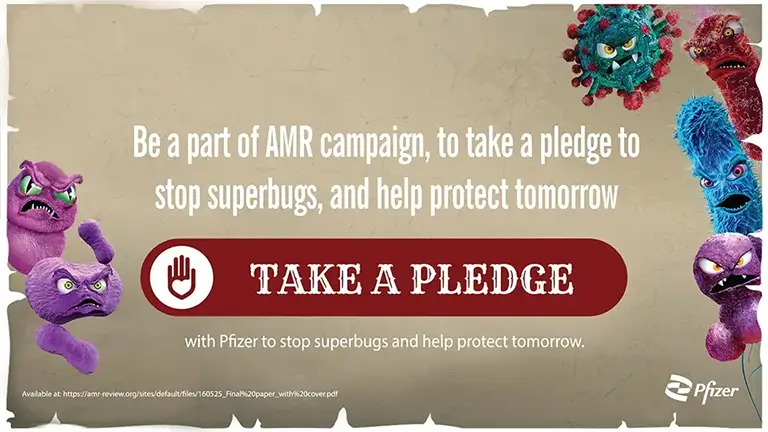
Antimicrobial Resistance




AMR is one of the biggest threats to global health today. It happens when germs like bacteria,viruses, and fungi change over time and no longer respond to the medicines designed to kill them, making the infections they cause harder to treat.1,2 If nothing is done, AMR is expected to cause 10 million deaths per year across the globe by 2050.3
Despite the significant risk to public health there is not enough clear information, creating several common misconceptions around the nature of AMR and the use of antimicrobials. Separate fact from fiction with our handy guide below.
1. Antimicrobial is just another word for antibiotic
This is a common misconception. Antimicrobials are medicines that are used to treat several different infections in humans, plants, and animals. Antimicrobials include antibiotics that target bacteria, antivirals that target viruses, and antifungals that target fungi.1,3
2. Antibiotics are effective against all infections
False. Antibiotics are medicines that can kill or inhibit the growth of bacteria. They are only effective in treating infections caused by bacteria and should not be taken for infections caused by viruses, such as COVID-19 or the flu. Antibiotics also only work on bacteria that are sensitive to them, and some bacteria are increasingly becoming resistant to common therapies.4,5
3. Fungal infections are minor and only affect your feet
Not true. Although there are common fungal infections that are largely treatable, like athlete’s foot, some fungal infections can be dangerous. For example, mucormycosis is a serious infection that typically affects the nose and sinuses. Antifungals play a pivotal role in treating these types of infections by killing or stopping the growth of dangerous fungi in the body.6,7,8
4. Antimicrobials make vaccination unnecessary
Wrong. Vaccines are administered to help prevent infections from happening in the first place, which naturally leads to a reduction in the use of antimicrobials.9 Experts agree that vaccines play a vital role in tackling AMR.
5. AMR occurs when the body becomes resistant to antimicrobials
This is a common misconception; it is actually the pathogen (bacteria, fungi, or virus) itself that can develop resistance to treatment, not the human body.6
6. AMR is only a problem for people who take antimicrobials frequently
This is not the case; anyone, of any age, in any country can become infected by drug resistant pathogens.5 Even though overuse of antimicrobials can increase the spread of AMR, it is the pathogen rather than the person that develops resistance to treatment.1,6
7. To minimise the risk of resistance, it is good practice to stop taking antimicrobials as soon as you feel better
Incorrect. It is important to follow the advice of your healthcare professional and to continue to take the course of medication for as long as directed by them.1,10
8. There isn’t anything we can do to slow the spread of AMR
Wrong. Everyone has a role to play in helping to slow the spread of AMR. You can personally help advance efforts against resistance by only taking antimicrobials when needed, keeping up to date with vaccinations, never sharing antimicrobial medication, washing hands regularly, and always taking antimicrobials exactly as prescribed by your healthcare professional.1,11
